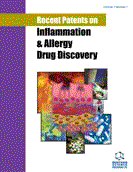Abstract
Psoriasis is a chronic recurring skin disorder affecting up to 2% of the worlds population. Psoriatic lesions are generally visible, leading to significant emotional and social disabilities for patients. In the context of psoriasis, the orchestrated interplay between activated T cells, antigen-presenting cells and keratinocytes leads to the release of proinflammatory cytokines, chemokines and chemical mediators responsible for the perpetuation of this disease. Even though some therapies are available for psoriasis treatment, there is still no cure for this skin disorder and psoriatic patients are significantly unsatisfied, as demonstrated by recent worldwide surveys. Unlike other diseases, psoriasis does not have a generally accepted animal model, which complicates the successful introduction of new antipsoriatic drugs into clinical phases of development. Moreover, psoriasis affects infants, children and elderly patients which require long-term therapies. Thus, the development of new therapeutic approaches should consider multiple factors such as efficacy, dosing frequency, route of administration, toxicity as well as co-morbidities of patients. This article analyzes current challenges for the antipsoriatic drug development and reviews recent patent applications gathered from 2000 to 2011 for psoriasis treatment. Additionally, future perspectives for antipsoriatic drug development are summarized.
Keywords: Antipsoriatic therapies, drug discovery, psoriasis, psoriasis models, PSORIATIC SKIN, PHYSIOPHATOLOGY, chronic obstructive pulmonary disease, metabolic syndrome, psoriatic arthritis, osteoporosis, challenges, satisfaction, treatment
 36
36


















